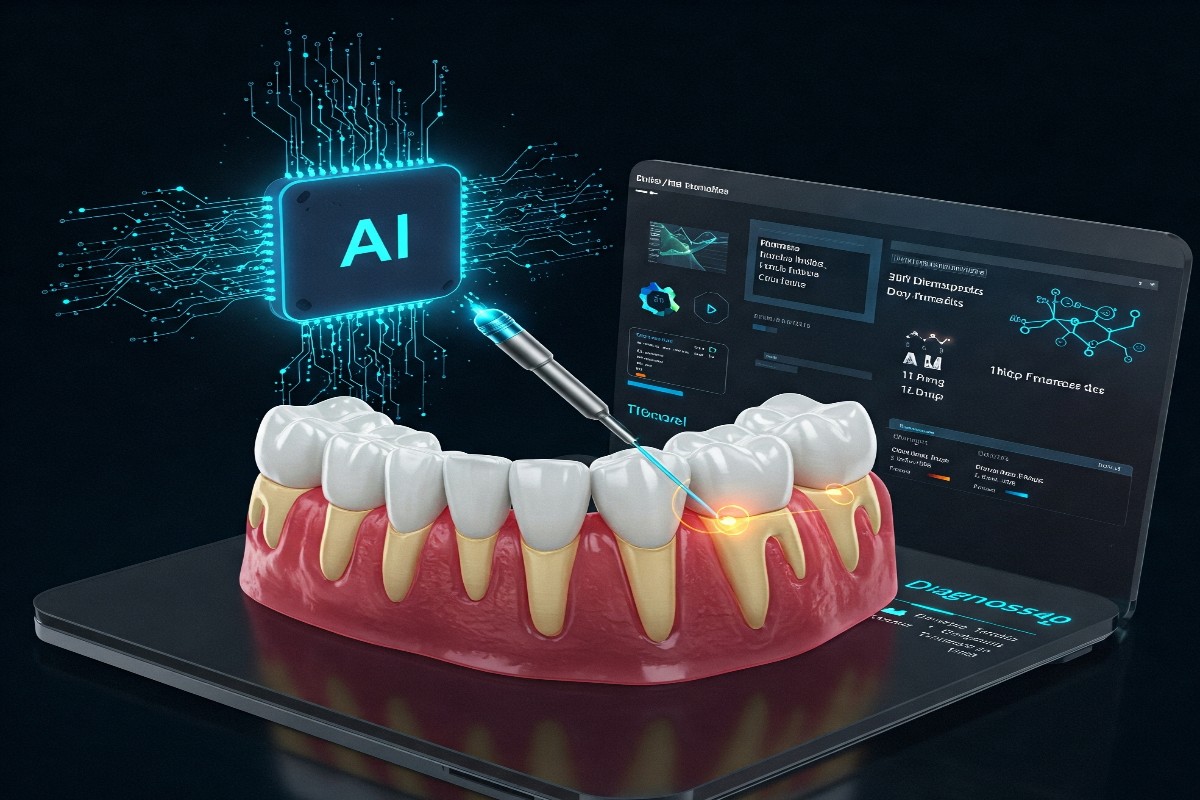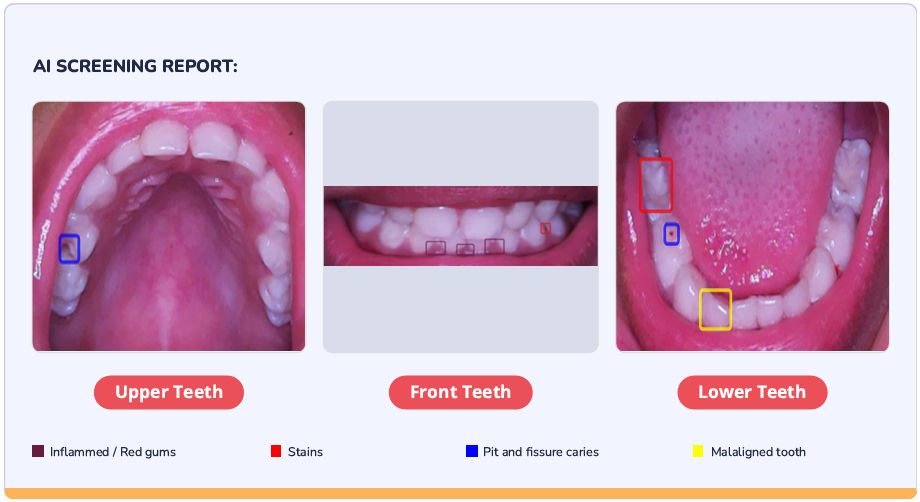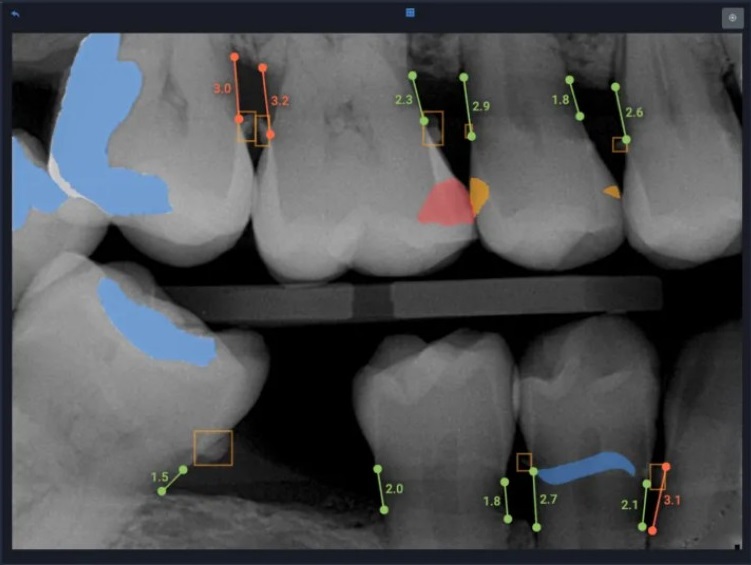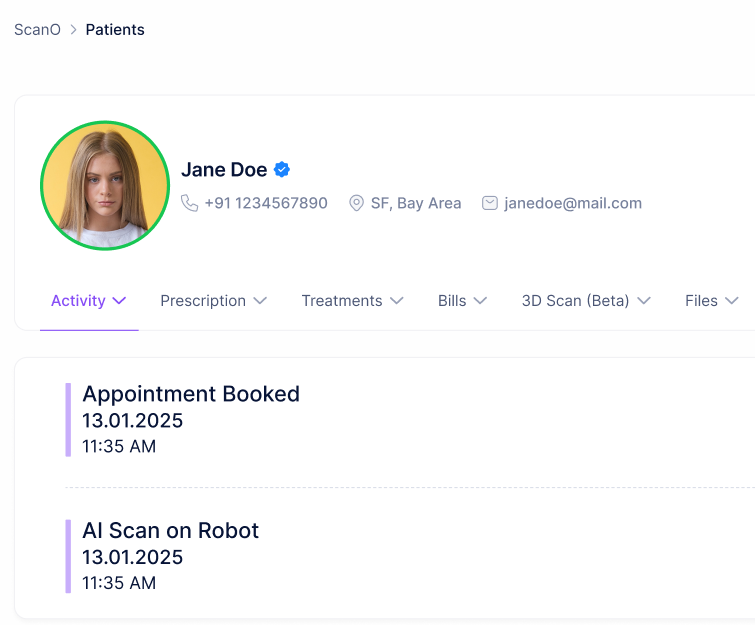

Gum disease also known as periodontal disease, is a global concern with over 1 billion cases of periodontal disease reported worldwide. It can be extremely painful and if left untreated, lead to serious consequences such as tooth mobility, pain while eating, and even tooth loss.
Despite being common, many people overlook the early signs like bleeding gums, bad breath, or mild swelling until it becomes a major issue. This is where AI in dentistry steps in. It can now help us catch hold of a disease in its earliest stages, proving that the role of AI in periodontal disease detection is nothing short of a game-changer!

What starts as inflammation of the gums (gingivitis) can advance to periodontitis, leading to chronic, irreversible bone loss and tooth damage because of bacteria settling around your teeth. Beyond the mouth, advanced gum disease has been linked to cardiovascular issues, diabetes, and adverse pregnancy outcomes. Detecting it early can:
In a routine check-up, dentists visually inspect the gums, and dental probes are used to measure pocket depths or bone loss. While these techniques are widely used, they rely heavily on the practitioner’s experience. Human error, subjective interpretation in different clinics, and difficulty spotting early disease make them less reliable in the earliest stages.
AI in dentistry makes diagnosis smarter, faster, and more precise by leveraging large datasets, machine learning, and image recognition. In a study conducted by Jundaeng et al. to test AI-driven models, the AI system showed 94.4% accuracy and 100% sensitivity- surpassing the performance of experienced periodontists, whose results stood at 91.1% accuracy and 90.6% sensitivity. Another study reports results comparable to experienced clinicians.
AI doesn’t replace dentists, it works in tandem to make their job easier (and more precise).
AI can be trained to analyse dental X-rays (OPGs and periapical images) using Convolutional Neural Networks (CNNs) and detect disease markers like bone loss and periodontal pockets. Training AI in reading CBCT scans may help detect bone resorption, attachment loss, and furcation involvement, often surpassing manual analysis. Such precise radiographic outcomes are changing the future of AI in dentistry.

By looking at a patient’s background, genetics, and health data, AI can spot those at higher risk and help dentists tailor treatments to catch problems early and keep gums healthier. This means dentists can choose the best approach- like scaling, antibiotics, or surgery- without relying on guesswork.
With 3D visualization, AI gives dentists a detailed map of periodontal issues, making tricky procedures like guided tissue regeneration and implant placement much easier to navigate. These smart systems provide real-time feedback to boost accuracy, protect healthy tissue, and improve surgery results. Plus, by analysing CBCT scans, it finds the perfect spot and angle for implants, helping to avoid complications and boost success rates, leveraging the use of AI in dentistry.
AI technologies like virtual assistants and chatbots are improving how patients learn about and manage their periodontal health. These AI tools explain gum conditions visually, offer personalized care tips, and make it easier for patients to understand their treatment plans.
For example, AI-powered apps can teach proper brushing techniques, stress the importance of regular cleanings, and remind patients when it’s time for their next dental visit.

Moreover, AI helps dentists predict when patients might need follow-up care. By reviewing past treatments and habits, AI systems send timely reminders to prevent complications and keep periodontal disease from coming back.
AI is quickly becoming the dental assistant everyone wishes they had—smart, speedy, and always on point. As it keeps getting better, here’s what the future of dentistry looks like:
The expertise of clinicians, combined with robust datasets, drives innovations that make dental care more preventive than interventional- helping to “nip it in the bud” before problems escalate.
Periodontal disease is a global concern that often flies under the radar until it causes serious damage. Thanks to AI in dentistry, we now have powerful tools to catch gum disease early, plan treatments more precisely, and keep patients on track with follow-ups. Popular AI platforms like scanO, Diagnocat, and Overjet are already making a difference in clinical practice to detect periodontal disease.
For patients, this means less discomfort, fewer complications, and more control over oral health. For dentists, AI offers precision, efficiency, and insight. Together, they create a smarter, more proactive dental care ecosystem—one where no gum problem goes unnoticed.
Dr. Aysha Sayed is a dentist and freelance writer with a strong passion for public health. She is committed to making healthcare more compassionate, intelligent, and community-focused. By combining her clinical expertise with the power of storytelling, she advocates for change and strives to make dental health more approachable, human, and heard.
scanO is an AI ecosystem transforming oral health for patients, dentists, corporates, and insurers worldwide

© 2025 Trismus Healthcare Technologies Pvt Ltd